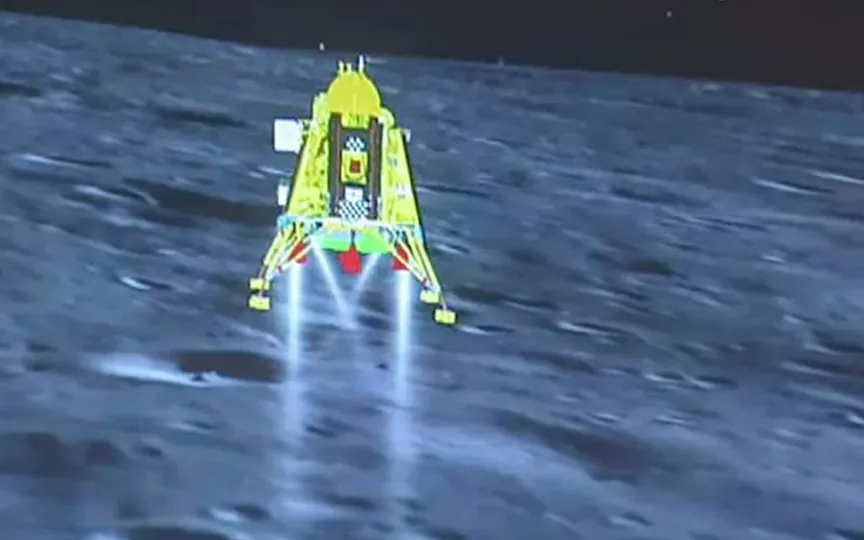ISRO to Attempt Reviving Vikram Lander and Pragyaan Rover at Lunar Sunrise with Chandrayaan-3 Mission
As sunrise is expected on the Moon, ISRO scientists are working to revive Chandrayaan 3’s Vikram Lander and Pragyaan rover, which have remained dormant for about half a month at the Moon’s Shiv Shakti point and have endured sub-zero temperatures of -200 degrees Celsius.
ISRO officials have clarified their plans to try to reactivate the lander and rover on Thursday and Friday, taking advantage of the Moon’s increased sunlight. However, they admit that the ability to restore the hardware to full functionality is limited. but they may be able to spawn a lander and rover with reduced capabilities.
Both the Vikram Lander and the Pragyaan rovers are currently located at the Moon’s south pole, where temperatures can drop drastically. These modules were originally designed to operate for one lunar day, equivalent to 14 Earth days, and have been without sunlight for half a month.
ISRO Chairman S. Somnath said he hopes the sun will shine on the Moon’s south pole so that Chandrayaan 3’s hardware can be revived. “We can only hope to bring the equipment back to life on September 22,” said S. Somnath.
Also, in terms of hardware status, they were put to sleep as planned when the moonset occurred on September 2nd. However, the solar batteries were left to charge and the modules were placed to receive sunlight at moonrise. .
It is worth noting that India’s Chandrayaan 3 mission achieved remarkable success when the Vikram Lander performed a soft landing on the other side of the Moon – something no other country had achieved before. This feat made India the fourth country after the United States, China and Russia to successfully land on the surface of the Moon and the first to land on the Earth’s South Pole. The Chandrayaan-3 mission began on July 14 with a Launch Vehicle Mark-III (LVM-3) rocket and began a 41-day journey to reach and land on the moon’s south pole.




